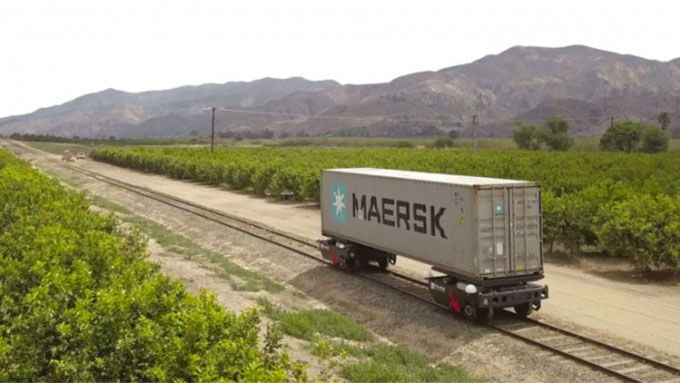The concept of a freight train that can separate carriages and self-propelled
Former SpaceX engineers are developing a new electric freight train to improve the efficiency and reduce emissions of the rail industry.
The transportation sector is currently the largest source of emissions in the US, though rail is only responsible for 2%. Estimates show that converting road transport to rail could reduce greenhouse gas emissions by up to 75%. In addition, railways are a great test ground for self-driving technologies because the limited movement of trains means there is less chance of accidents.
Parallel Systems, founded by three former SpaceX engineers, recently raised $49.55 million to develop new self-driving freight cars that it believes will not only improve
the efficiency of the rail industry, but also help protect the environment.

A Parallel Systems train carriage flows test on the track.
"We founded Parallel to expand the market for the rail industry, increase infrastructure utilization and improve services, to accelerate freight decarbonisation. we are instrumental in converting some of today's $700 billion trucking industry to rail.Parallel systems can also help ease supply chain crises by enabling transportation goods in and out frequently at low cost," shared Matt Soule, co-founder and CEO of Parallel Systems.
Soule left SpaceX in 2019 after 13 years on the job. Along with two other former SpaceX engineers, John Howard and Ben Stabler, he began combining modern software and hardware with existing rail technology.
Back last September, train manufacturer Wabtec unveiled the world's first battery-powered locomotive with 100 times the power of Tesla's electric cars. However, Parallel System's self-propelled carriages stand out for their ability to separate and move in different directions when running on rails. Each car will be individually powered with a range of about 800km and only takes about an hour to fully charge.
Parallel System's solution uses lighter materials and has a more aerodynamic design, thereby saving energy than traditional cargo ships. In a press release, the company said that each of its carriages uses only 25% less energy than a trailer, but can carry twice as much payload, up to 58 tons.
Parallel System adds that its vehicles will be equipped with advanced sensors capable of quickly detecting obstacles on the track. This combined with a backup automatic braking system that is 10 times faster than a traditional train will provide a safer traffic solution. The company believes that such efficiency and safety benefits could convince stakeholders to convert road transport to rail.
- Toyota unleashes the only self-propelled car in fiction
- France launches self-propelled bus
- China's Moon self-propelled vehicles are weak
- Test of self-propelled Mars
- Self-propelled armed robots will be 'infinite disaster'
- It can only be Japan: The train knows how to fake dogs and deer to prevent accidents
- 2025 is the year of self-propelled cars
- Things to know about self-propelled cars
- Dangerous that no one knows because the fault waiting for the train is not correct
- The idea of aircraft with 3 separate cabins, turned into train cars after landing
- The construction of the super speed train 1.200km / h under water
- What solution for e-government
 The US company is about to build a supersonic passenger plane of 6,000km / h
The US company is about to build a supersonic passenger plane of 6,000km / h Japan develops avatar robot as in fiction film
Japan develops avatar robot as in fiction film Australia tested the world's first mango picking robot
Australia tested the world's first mango picking robot America develops technology to separate water from animal waste
America develops technology to separate water from animal waste